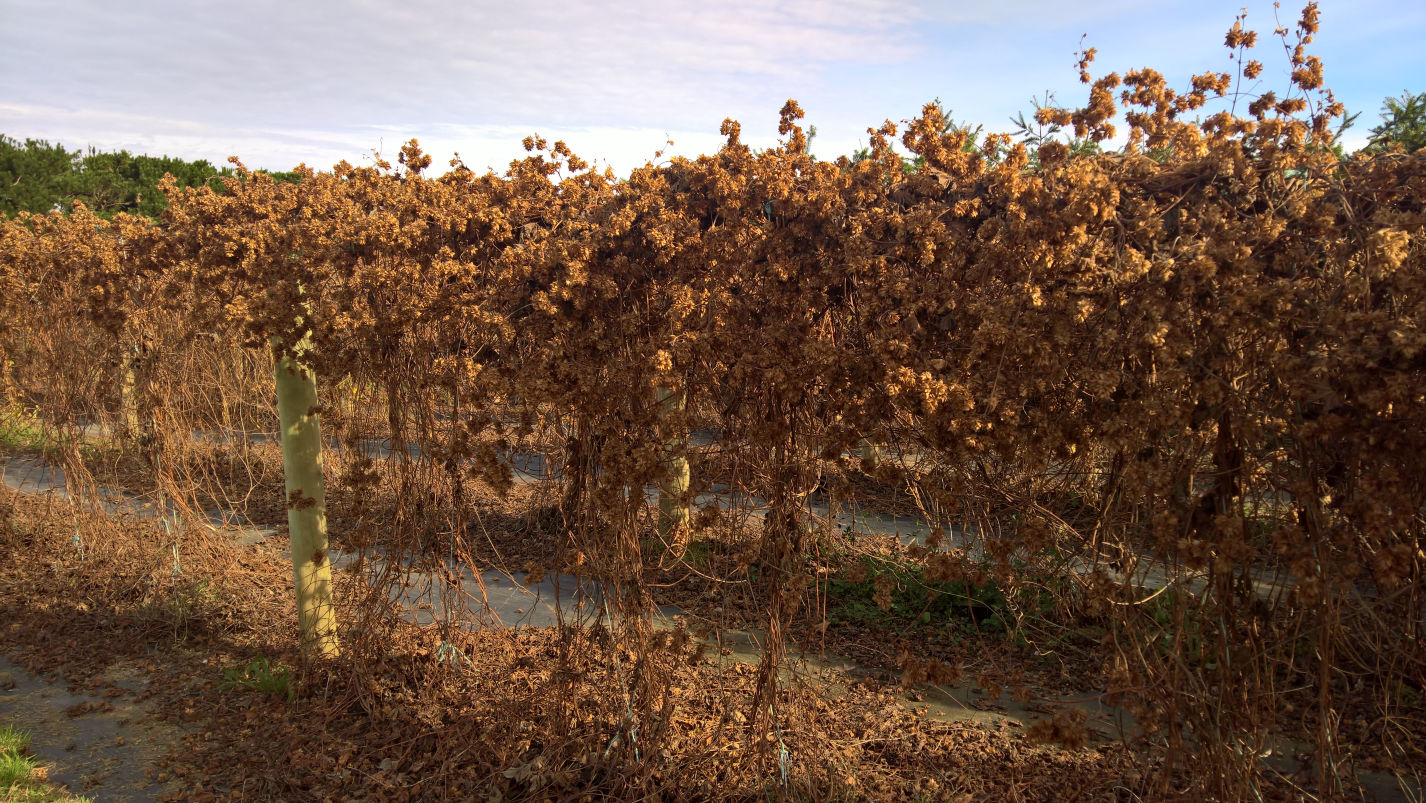

As Autumn starts to roll in around the end of March in the Southern Hemisphere and if you picked your hops from the bine but left the plants to grow on and produce extra nutrients, your hop plants will now start to develop yellow leaves as the plant takes the goodness from the leaves and sends it for storage in the tap root (which can extend up to 5 metres into the ground) in preparation for Winter dormancy (resting phase) usually May to August.
The leaves will gradually turn brown and fall off (use as mulch) and the bines will also turn brown and brittle. Now is the time to remove any bines still attached to the crown as they will never be used by the plant again because all new seasons growth will come from new buds within the crown area.
If you used a natural string product to train the bines you can use the bine and string for compost. If you used an nylon product it is probably best to burn the bines or put them in the garbage.
You can now add compost around the base of the plants. Organic well rotted compost made from plants and animal manures requires the action of bacteria to to continue break it down over Winter into simple compounds to be available for the plant to use in the Spring and for earthworms to take it through their digestive systems and leave rich nutrient deposits for the plants throughout the soil as they burrow. Winter rains will also help to wash the compost into the top part of the soil.
Mulch the base of the plant with something like pea straw, grass clippings, leaf mulch to keep the compost moist, the worms covered. The mulch will also encourage the birds to scratch around after insects while doing a bit of cultivation and fertilisation. The mulch will also insulate the new growth in the Spring from the frosts and continue to breakdown adding yet more nutrients to the soil.
If you are using a non-organic fertiliser like Nitrophsoka, apply this in the Spring around the plant but not on top of the growing crown. As Nitrophsoka is water soluble if it is applied in Winter most would be all washed away to no benefit before the onset of Spring. However you can still mulch the plants in the Autumn to get most of the benefits described above.
Hop plants need a certain amount of hours of chill to perform as expected and produce a crop of cones the following Spring. Just how many hours of chill is up to debate. In the USA sources suggest a threshold temperature of around 40–43 °F (4.4–6 °C) for a minimum cumulative period of 30–60 days.
The hops will remain dormant until the temperatures start to rise again in August and even September in some areas. As the bines start to shoot through the soil again a water soluble fertilisation containing a mixture of fish, seaweed and bio fungicide powder on a monthly basis will be extremely beneficial to the new seasons growth.